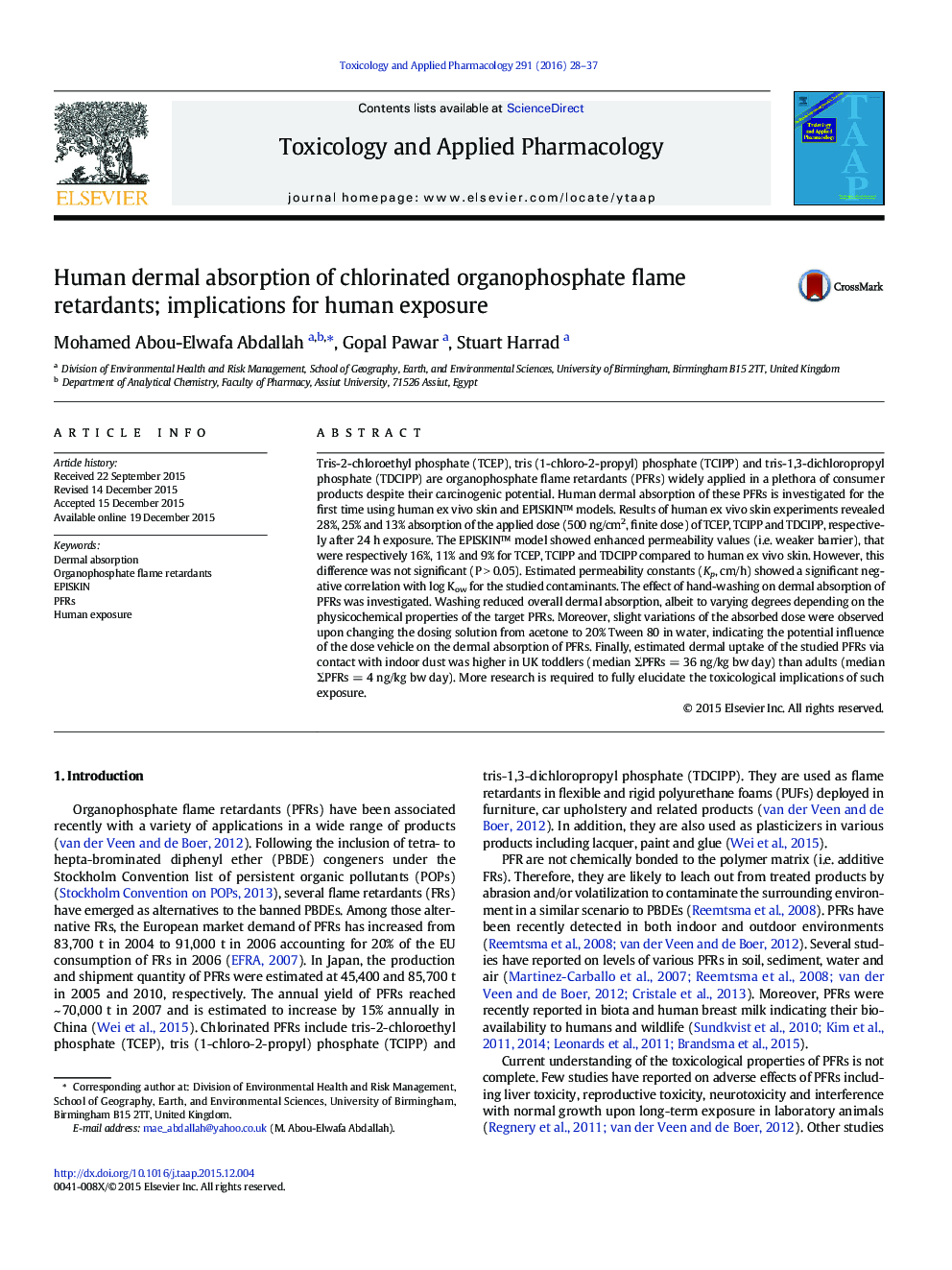| کد مقاله | کد نشریه | سال انتشار | مقاله انگلیسی | نسخه تمام متن |
|---|---|---|---|---|
| 2568200 | 1561171 | 2016 | 10 صفحه PDF | دانلود رایگان |
• Human dermal absorption of PFRs was studied using human ex vivo skin and EPISKIN™.
• Absorbed fractions of TCEP, TCIPP and TDCIPP were 28%, 25% and 13% of applied dose.
• Permeability constants showed significant negative correlation to log Kow of PFRs.
• Skin washing reduced the overall dermal absorption of target PFRs to varying degrees.
• Toddlers are more exposed to PFRs via dermal contact with indoor dust than adults.
Tris-2-chloroethyl phosphate (TCEP), tris (1-chloro-2-propyl) phosphate (TCIPP) and tris-1,3-dichloropropyl phosphate (TDCIPP) are organophosphate flame retardants (PFRs) widely applied in a plethora of consumer products despite their carcinogenic potential. Human dermal absorption of these PFRs is investigated for the first time using human ex vivo skin and EPISKIN™ models. Results of human ex vivo skin experiments revealed 28%, 25% and 13% absorption of the applied dose (500 ng/cm2, finite dose) of TCEP, TCIPP and TDCIPP, respectively after 24 h exposure. The EPISKIN™ model showed enhanced permeability values (i.e. weaker barrier), that were respectively 16%, 11% and 9% for TCEP, TCIPP and TDCIPP compared to human ex vivo skin. However, this difference was not significant (P > 0.05). Estimated permeability constants (Kp, cm/h) showed a significant negative correlation with log Kow for the studied contaminants. The effect of hand-washing on dermal absorption of PFRs was investigated. Washing reduced overall dermal absorption, albeit to varying degrees depending on the physicochemical properties of the target PFRs. Moreover, slight variations of the absorbed dose were observed upon changing the dosing solution from acetone to 20% Tween 80 in water, indicating the potential influence of the dose vehicle on the dermal absorption of PFRs. Finally, estimated dermal uptake of the studied PFRs via contact with indoor dust was higher in UK toddlers (median ΣPFRs = 36 ng/kg bw day) than adults (median ΣPFRs = 4 ng/kg bw day). More research is required to fully elucidate the toxicological implications of such exposure.
Journal: Toxicology and Applied Pharmacology - Volume 291, 15 January 2016, Pages 28–37
